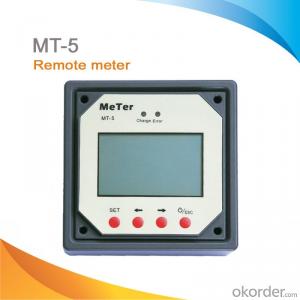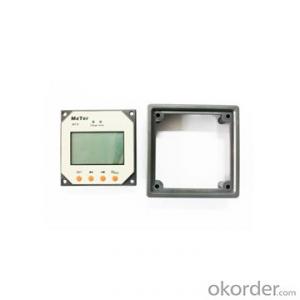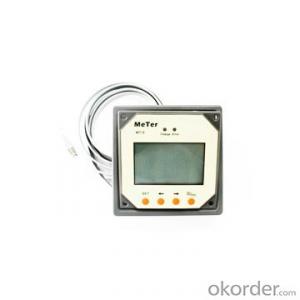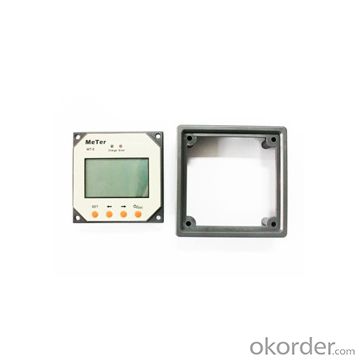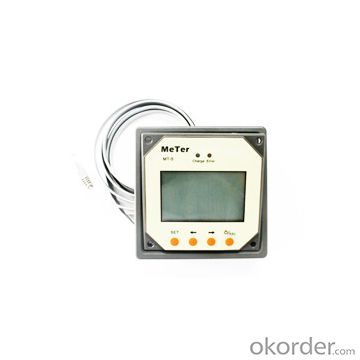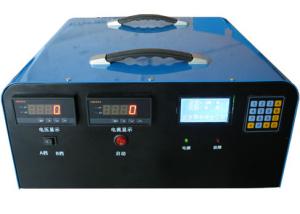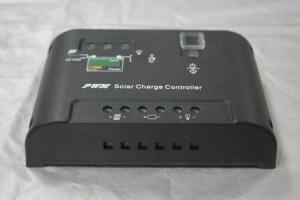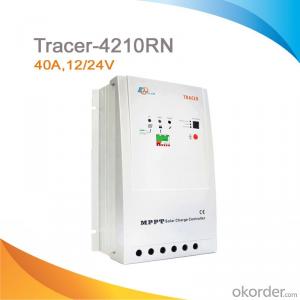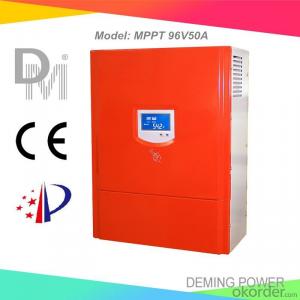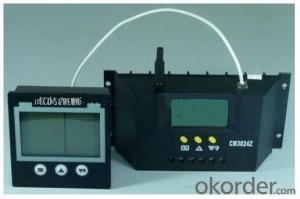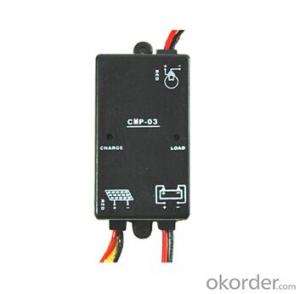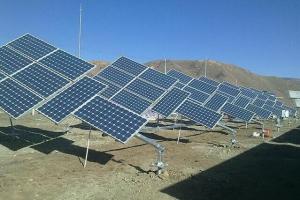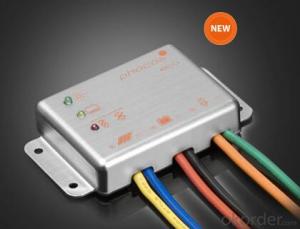Remote Display for Tracer Series,Remote Meter MT-5
- Loading Port:
- Tianjin
- Payment Terms:
- TT or LC
- Min Order Qty:
- 50 pc
- Supply Capability:
- 5000 pc/month
OKorder Service Pledge
OKorder Financial Service
You Might Also Like
MT-5 is an optional accessory for Tracer series solar charge controller. The LCD displays the system status and parameters clearly.
Features:
·Display the system status and parameters with digital and graphic icon.
·Battery type selectable
·Battery Ah setting function
·Temperature compensation coefficient adjustable
·Four keys to solve the setting easily
·Control the load by manual
Specification:
Rated voltage | 12V, min voltage (suggest): 8.0V |
Strong backlight on | <23mA |
Low backlight on | <20mA |
Backlight and LED indicator off | <17mA |
Operation temperature | -40℃ ~ +60℃ |
LCD operation temperature | -10℃ ~ +40℃ |
Humidity | 0-100% |
Communication cable | RJ45(8PIN), 2 meter |
Battery voltage parameters (temperature at 25°C) | |||
Battery charging setting | Sealed | Flooded | Gel |
Equalize charging voltage | 14.4 V;x2/24V | 14.6V;x2/24V | 14.8V;x2/24V |
Boost charging voltage | 14.2V;x2/24V | 14.4V;x2/24V | 14.6V;x2/24V |
Float charging voltage | 13.7V;x2/24V | 13.7V;x2/24V | 13.7V;x2/24V |
Max. solar voltage | 30V(12V system),55V(24V system) | ||
Battery voltage range | 8-15V(12V system),8-30V(24V system) | ||
Self-consumption | 4mA at night, 10mA at charging | ||
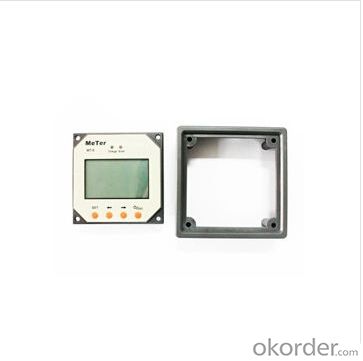
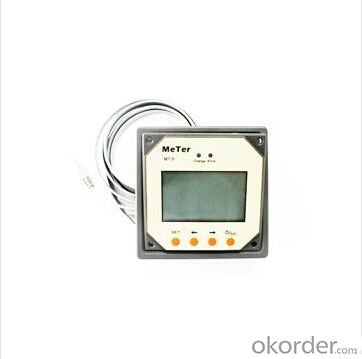
FAQ:
Q1. What is the voltage?
A1. Our 45/60A solar charge controller is 12/24/36/48V auto work.
Q2. What is the difference between MPPT&PWM?
A2. MPPT has higher efficiency, it can track the max power point and won't waste energy.
Q3. What is the efficiency of the MPPT controller?
A3. MPPT>99%, peak conversion efficiency>98%.
Q4. What is the waranty of product?
A4. 12 months.
Q5. What protection does your MPPT controller have?
A5. PV array short circuit, PV reverse polarity, Battery reverse polarity, Over charging, Output short circuit.
- Q: Can a solar controller be used in both residential and commercial applications?
- Yes, a solar controller can be used in both residential and commercial applications.
- Q: What is the purpose of the battery low voltage disconnect feature on a solar controller?
- The battery low voltage disconnect feature on a solar controller serves the purpose of safeguarding the batteries against complete discharge. When the battery voltage falls below a specific threshold, typically around 11.5 volts, the disconnect feature automatically halts the power supply from the solar panels to the batteries. This measure effectively prevents excessive discharge, which could result in irreversible harm to the batteries and drastically reduce their lifespan. By disconnecting the solar panels during periods of low battery voltage, this feature guarantees that a minimum charge level is consistently maintained in the batteries. This aspect holds particular significance in off-grid solar systems, where the batteries serve as the primary power source during times of limited or no sunlight. Without the low voltage disconnect, the batteries could be completely drained to a point where recharging them effectively becomes impossible, leaving the system without power until the batteries are replaced. Furthermore, the low voltage disconnect feature not only safeguards the batteries but also helps protect other system components, such as inverters and charge controllers, from potential damage due to low voltage conditions. By interrupting the power flow when the voltage drops too low, it acts as a preventive measure against possible malfunctions and failures in the system. Overall, the objective of the battery low voltage disconnect feature on a solar controller is to ensure the batteries' longevity and optimal performance, while simultaneously shielding the entire solar system from potential damage and operational issues caused by low voltage conditions.
- Q: Can a solar controller be used with multiple solar panels?
- Yes, a solar controller can be used with multiple solar panels. The solar controller regulates the flow of electricity from the solar panels to the battery or load, regardless of the number of panels connected to it.
- Q: How does a solar controller handle variations in battery discharge level?
- A solar controller regulates the charging process of a battery by monitoring its voltage levels. When it detects a low discharge level, it adjusts the charging parameters accordingly to provide a higher charging current. This helps in replenishing the battery quickly and efficiently. Conversely, if the discharge level is high, the solar controller decreases the charging current to prevent overcharging and prolong the battery's lifespan.
- Q: Can a solar controller be used with solar panel theft prevention systems?
- Solar panel theft prevention systems can benefit from the use of a solar controller. This device regulates the voltage and current produced by solar panels, ensuring efficient energy utilization or storage in batteries. While these theft prevention systems mainly focus on securing solar panels, integrating a solar controller can enhance their functionality. By connecting the solar controller to the panel system, it can monitor power output and provide real-time information on energy generation. This enables the detection of any unusual drop in power production, which may indicate tampering or theft. Additionally, a solar controller can be programmed to send alerts or notifications in case of unauthorized access or tampering, further enhancing system security. Therefore, incorporating a solar controller into a solar panel theft prevention system adds an extra layer of protection and promotes the safety and efficient operation of the panels.
- Q: Can a solar controller be used in a solar-powered greenhouse system?
- Yes, a solar controller can be used in a solar-powered greenhouse system. A solar controller helps regulate and optimize the charging and discharging of batteries connected to solar panels. In a solar-powered greenhouse system, the solar controller would ensure efficient use of solar energy by managing the power flow between the panels, batteries, and other components, thereby enhancing the overall performance and sustainability of the system.
- Q: What is the maximum distance a solar controller can be placed from the batteries?
- The maximum distance a solar controller can be placed from the batteries depends on the specific model and its design. In general, the distance should be minimized to reduce voltage drop and ensure efficient charging. It is recommended to consult the manufacturer's specifications or guidelines for the specific solar controller being used to determine the maximum distance allowed.
- Q: Can a solar controller be used with solar panel ground racks?
- Yes, a solar controller can be used with solar panel ground racks. A solar controller is responsible for regulating the flow of electricity between the solar panels and the battery bank. It controls the charging process to ensure the batteries are not overcharged or damaged. Whether the solar panels are mounted on the ground or on a rooftop does not affect the functionality of the solar controller.
- Q: How do I protect a solar controller from insects or pests?
- To protect a solar controller from insects or pests, you can start by regularly inspecting the area around the controller for any signs of infestation. Seal any gaps or cracks in the surrounding walls or structures to prevent entry points for insects. Additionally, consider installing a mesh or screen cover over the controller to create a physical barrier against pests while allowing proper ventilation. Regular cleaning and maintenance of the controller and its surroundings will also help deter insects from nesting or causing damage.
- Q: Which type of solar controller is more efficient?
- The maximum power point tracking (MPPT) solar controller is generally considered to be more efficient compared to the pulse width modulation (PWM) solar controller. MPPT controllers can optimize the output of solar panels by tracking the maximum power point of the panels, resulting in higher conversion efficiency and better utilization of available solar energy. On the other hand, PWM controllers regulate the charging of batteries by intermittently connecting and disconnecting the panels, which can lead to some energy loss. Therefore, MPPT controllers are often preferred for their higher efficiency in converting solar energy into usable power.
Send your message to us
Remote Display for Tracer Series,Remote Meter MT-5
- Loading Port:
- Tianjin
- Payment Terms:
- TT or LC
- Min Order Qty:
- 50 pc
- Supply Capability:
- 5000 pc/month
OKorder Service Pledge
OKorder Financial Service
Similar products
Hot products
Hot Searches
Related keywords
